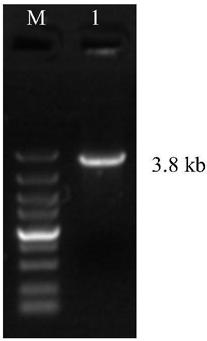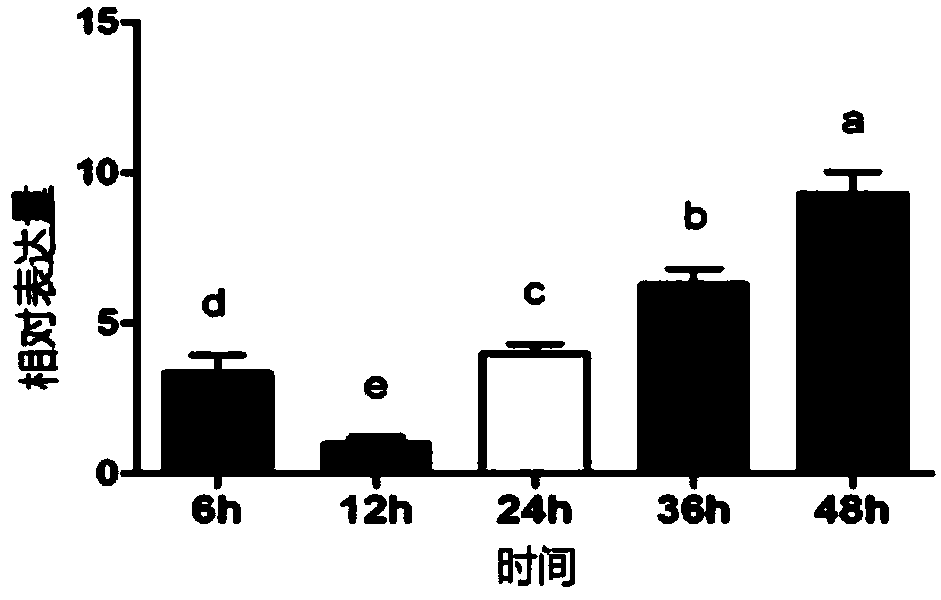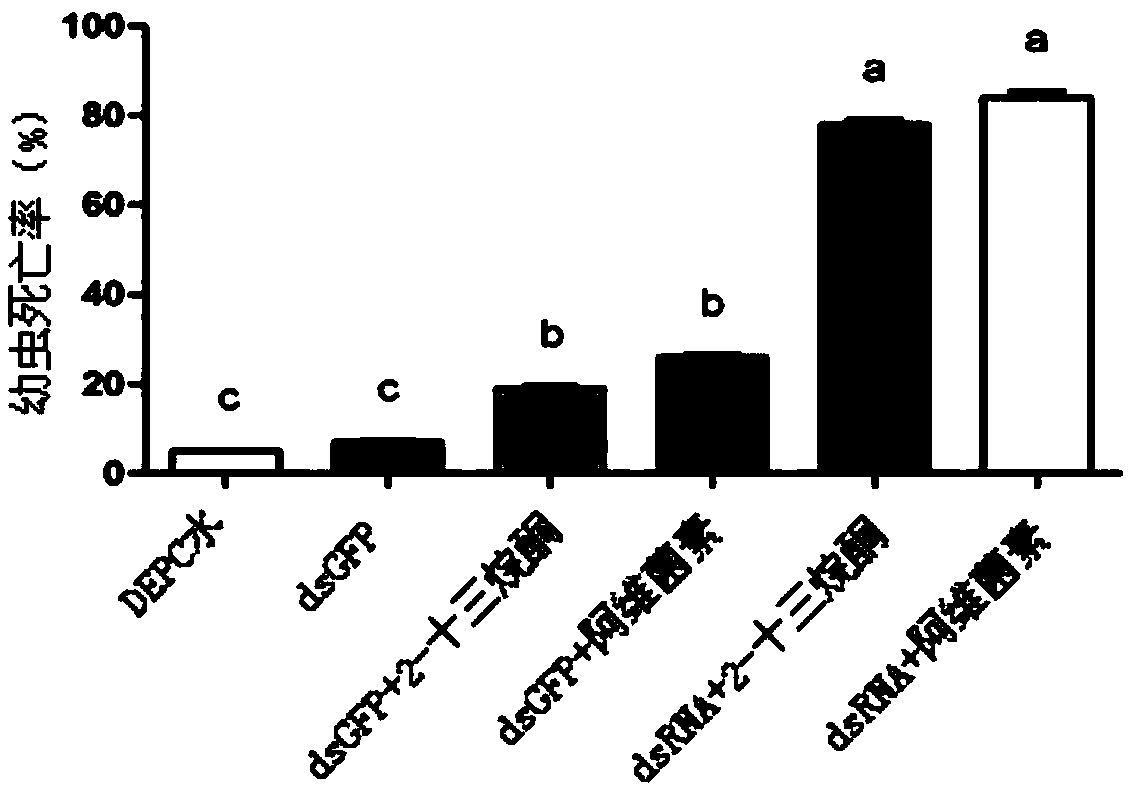The p-glycoprotein gene of cotton bollworm and its application
A P-glycoprotein, cotton bollworm technology, applied in the field of genetic engineering and RNA interference, can solve problems such as environmental pollution, harmful genetic modification, higher animal damage, etc., and achieve the effects of solving ecological deterioration, enhancing sensitivity, and improving pest control effects.
- Summary
- Abstract
- Description
- Claims
- Application Information
AI Technical Summary
Problems solved by technology
Method used
Image
Examples
Embodiment 1
[0021] Example 1 Cloning of the full-length sequence of the P-glycoprotein gene HaPgp1 of cotton bollworm
[0022] Extract total RNA of cotton bollworm, reverse transcribe to obtain cDNA, use cDNA as template, design primers F1 and R1 according to the 411bp sequence announced in NCBI (GenBank: KC713821.1), PCR amplification obtains the partial sequence of P-glycoprotein gene of cotton bollworm, Then use 5'-Full RACE Kit and 3'-Full RACECore Set with PrimeScript RTase (purchased from TaKaRa) by cDNA end rapid cloning technology (RACE technology), and operate according to the instructions of 5'RACE and 3'RACE kits respectively to obtain cotton bolls Insect P-glycoprotein gene cDNA sequence full-length (SEQ ID NO: 2); Then using cDNA as a template, design full-length primers F2 and R2 to amplify a band of about 3800bp size, 1% agarose gel electrophoresis analysis ( figure 1 ), and carry out cutting and recycling. Recovery fragments with pEASY TM -The Blunt zero Cloning Vector v...
Embodiment 2
[0026] Example 2 Synthesis of Cotton Bollworm HaPgp1 Gene dsRNA
[0027] According to the sequence (SEQ IDNO:3) of a length of 282bp in the HaPgp1 gene of the cotton bollworm obtained by cloning according to Example 1, the dsRNA of the HaPgp1 gene is designed, and the dsRNA is synthesized by an in vitro transcription reagent and mixed with the cotton bollworm artificial diet to feed the 2nd instar cotton boll Worm larvae.
[0028] Specifically, primers 5′-TAATACGACTCACTATAGGGGACGTCATTGATGGCAGTGT-3′ and 5′-TAATACGACTCACTATAGGGACGCTGTTTCTGACCTCCTG-3′ (SEQ ID NO: 9 and 10) were designed using the MEGAscript T7 transcription kit, and the dsRNA of the HaPgp1 gene was obtained by in vitro transcription. The dsRNA was mixed with the artificial diet of cotton bollworm (35 μg / g), fed to the 2nd instar larvae, and the expression of HaPgp1 gene was detected by fluorescence quantitative PCR at 12h, 24h, 36h and 48h after feeding, and it was found that the interference effect was the best ...
Embodiment 3
[0030] Example 3 dsRNA of HaPgp1 gene can improve the sensitivity of cotton bollworm to plant secondary substances 2-tridecanone and abamectin
[0031] The dsRNA synthesized in vitro in Example 2 is mixed with artificial feed (35 μ g / g), fed to the 2nd instar larvae of cotton bollworm, and the cotton bollworm is treated with 2-tridecanone and abamectin medicaments simultaneously, and the effect of cotton bollworm on 2 - Sensitivity to tridecanone and abamectin.
[0032]Specifically, the treatment group treated 25 2nd instar larvae of cotton bollworm with HaPgp1 dsRNA at a concentration of 35 μg / g for 12 hours, and then treated the above cotton bollworm with 0.1 mg / g 2-tridecanone and 0.4 μg / g abamectin , wherein feeding GFP dsRNA was used as a control group, DEPC water treatment was used as a negative control, and the experiment was repeated four times. The mortality of cotton bollworms in the control group and the treatment group were recorded as a standard to judge whether ...
PUM
 Login to View More
Login to View More Abstract
Description
Claims
Application Information
 Login to View More
Login to View More - R&D
- Intellectual Property
- Life Sciences
- Materials
- Tech Scout
- Unparalleled Data Quality
- Higher Quality Content
- 60% Fewer Hallucinations
Browse by: Latest US Patents, China's latest patents, Technical Efficacy Thesaurus, Application Domain, Technology Topic, Popular Technical Reports.
© 2025 PatSnap. All rights reserved.Legal|Privacy policy|Modern Slavery Act Transparency Statement|Sitemap|About US| Contact US: help@patsnap.com



